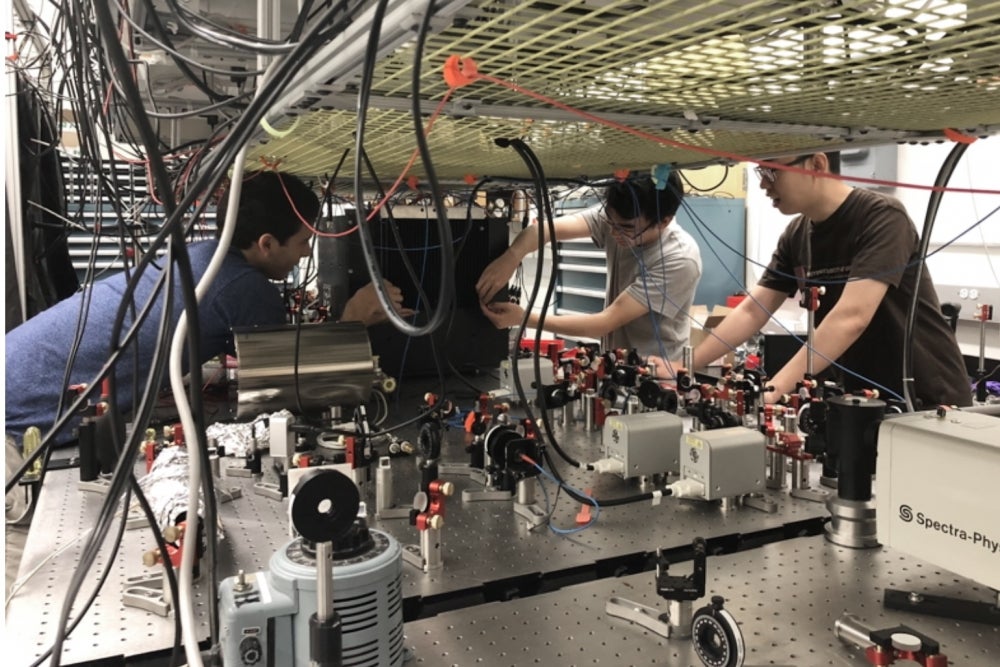
Becoming a Quantum Mechanic


Although it may study the universe at its smallest scales, quantum science has become a big field. “And as a scientific field gets more mature, you bump into problems that take you in new directions,” said UC Santa Barbara physicist David Weld. Progress requires a collaborative approach and familiarity with a variety of techniques.
That’s why Weld is leading the development of a new endeavor to train doctoral students in a multidisciplinary approach to quantum science. The Integrative Training in Quantum Assembly & Technology (InTriQATE) initiative is supported by a nearly $3 million grant from the National Science Foundation (NSF). Weld and his eight co-principal investigators anticipate training 75 Ph.D. students — including 30 funded “trainees” — from the Departments of Physics, Chemistry, Materials Science, Biochemistry, Electrical & Computer Engineering, and Biomolecular Science and Engineering.
“The field of quantum science has evolved to the point where people who are going to make contributions to it need to know things from many disciplines,” Weld said. “They need a combination of insights and techniques from multiple fields.”
This NSF Research Traineeship (NRT) will exemplify the collaborative spirit that is ubiquitous at UC Santa Barbara. The program will introduce young scientists to different fields so they learn where to look for solutions to their research problems in the increasingly interdisciplinary topic of quantum science. Hopefully, this will help the doctoral students avoid tunnel vision even as they begin specializing in a specific area.
The multifaceted program encompasses new course offerings, professional support and research opportunities. A quantum lab class will serve as its centerpiece. “It’s going to be less of an introduction to the ![]() and two-by-two matrices of quantum science and more of the nuts and bolts of how you actually build a quantum technology or do a quantum science experiment in the lab,” Weld said.
and two-by-two matrices of quantum science and more of the nuts and bolts of how you actually build a quantum technology or do a quantum science experiment in the lab,” Weld said.
The grant provides funding for the 30 trainees to pursue research at UCSB and at other institutions and companies through an exchange program. What’s more, students from across the sciences and engineering will have access to the NRT’s courses, job fairs, workshops and even faculty mentorships. The faculty plan to develop a seminar series, informal lunches and inter-departmental team projects as well.
“The program has many different facets, and we want to adapt it as best we can to the particular students and provide them with a lot of exposure to different fields,” said Associate Professor Andrew Jayich, one of the NRT’s eight co-principal investigators. “We’re going to evaluate the program and adapt as it moves forward.”
The program’s leadership is excited about opportunities for productive synergies between the NRT and other enterprises on campus, such as the education component of the UC Santa Barbara NSF Quantum Foundry. “The NRT lab course is sort of the experimental version of the Quantum Foundry’s introduction to quantum science course,” Weld said. “We hope that a lot of students will take both of these, and they should feed off of each other in a productive way.”
The NRT kicks off in spring 2023 with five years of funding. Jayich noted that, If it goes well, it could serve as a model for similar initiatives at other campuses.
“We’re really excited about this as a new approach to training and educating quantum scientists,” Weld said. “We’re excited about the focus on experiment. We’re excited about people learning from different disciplines. And we think this will be, hopefully, a pretty fun and high-impact program for the campus at large.”



